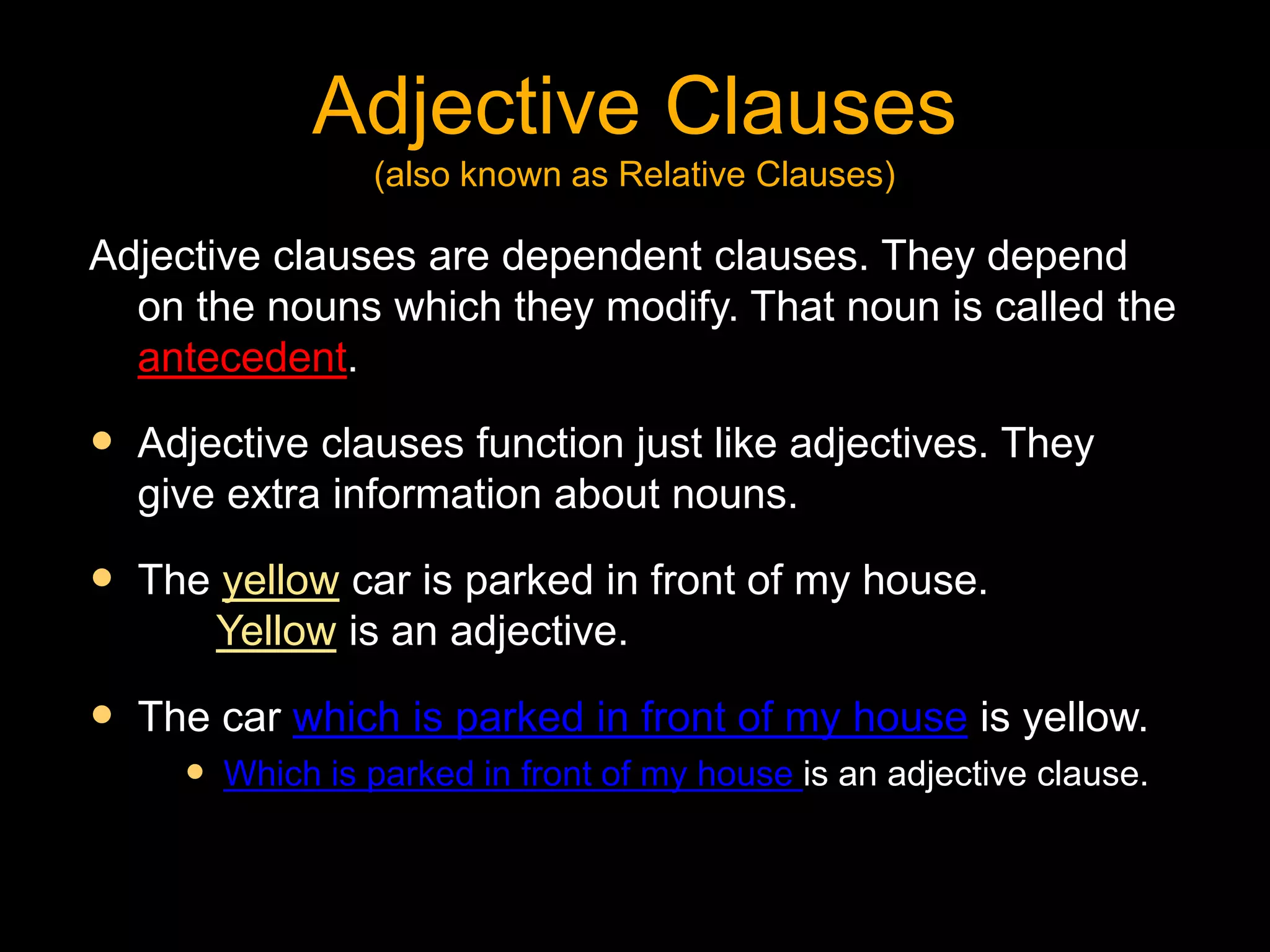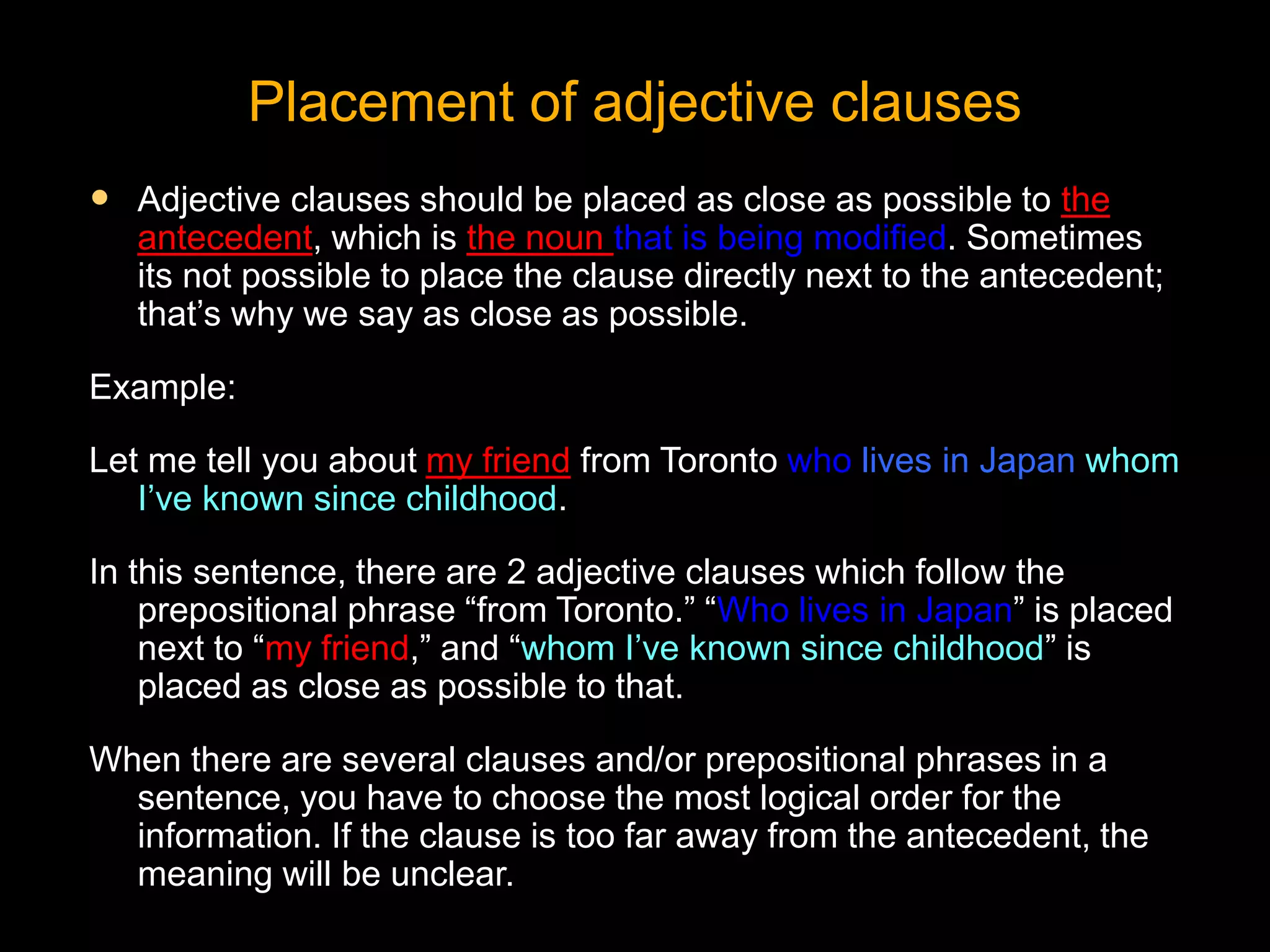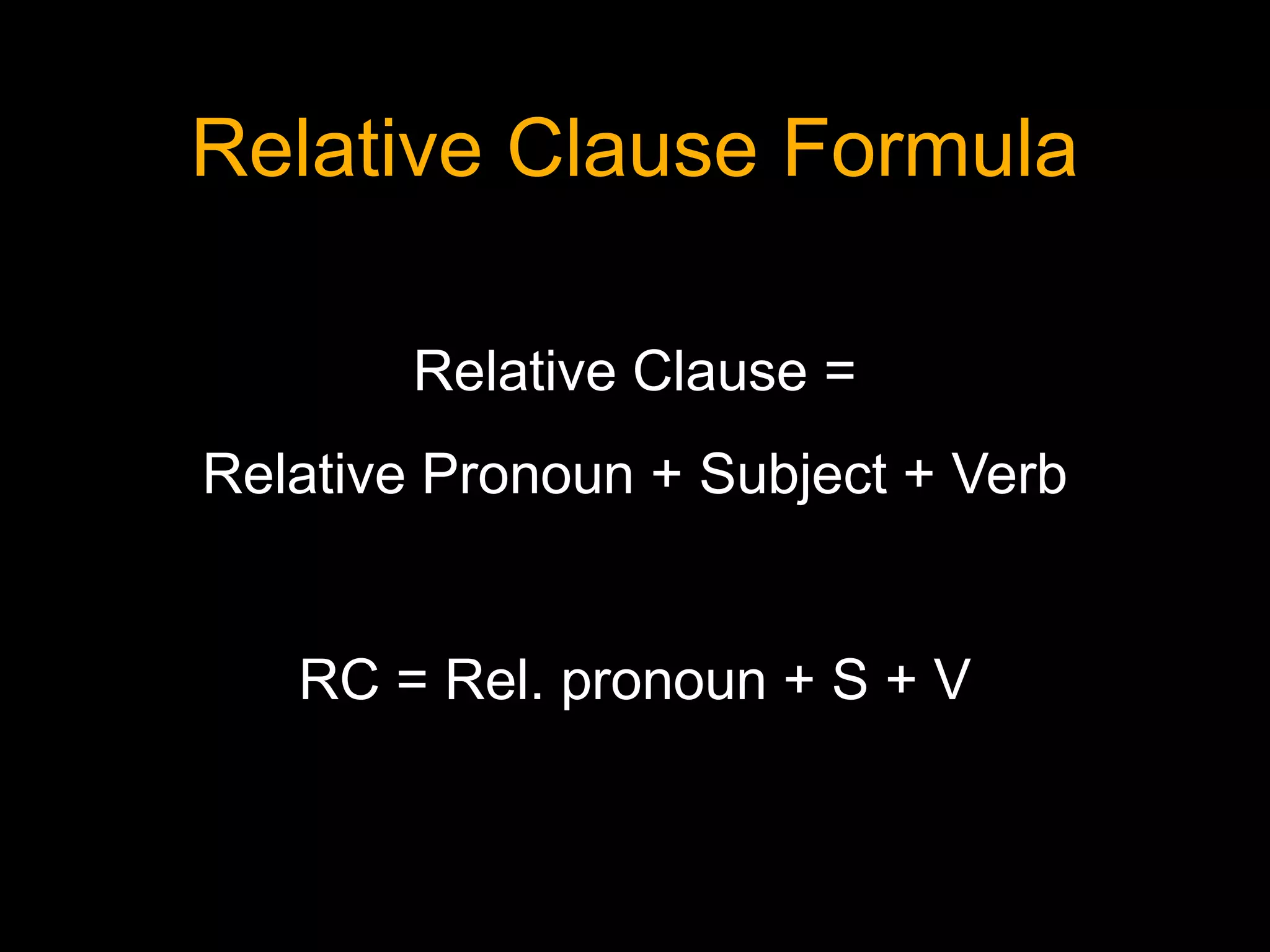This document discusses adjective clauses, also known as relative clauses. It defines adjective clauses as dependent clauses that modify nouns called antecedents. Adjective clauses function like adjectives by providing extra information about nouns. The document covers the placement of adjective clauses, the different types of relative pronouns used to introduce clauses, and the two types of clauses - subject clauses and object clauses. It also discusses modifying place and time within adjective clauses.








![In a subject relative clause, the relative pronoun is the subject.
Remember the formula: RC=Rel. pronoun + S + V
The woman [who lives next door] is coming to dinner tonight.
The book [which is on the table] is my grammar book.
The student [whose essay won the contest] is a good writer.
Where is the subject? The rel. pronoun and the subject are one
and the same.
*Because the relative pronoun IS the subject in a subject
clause, it can NEVER BE REMOVED!](https://image.slidesharecdn.com/adjectiveclauses-150312201527-conversion-gate01/75/Adjectiveclauses-9-2048.jpg)



![Remember the formula: RC=Rel. pronoun + S + V
The man [who/whom/that/0 I saw last night at the theater]
was Mr. Jones.
I didn’t like the movie [which/that/0 we saw last night].
That student [whose parents you met yesterday] is a
terrific writer.
The relative pronoun in an object clause can be removed.](https://image.slidesharecdn.com/adjectiveclauses-150312201527-conversion-gate01/75/Adjectiveclauses-13-2048.jpg)




